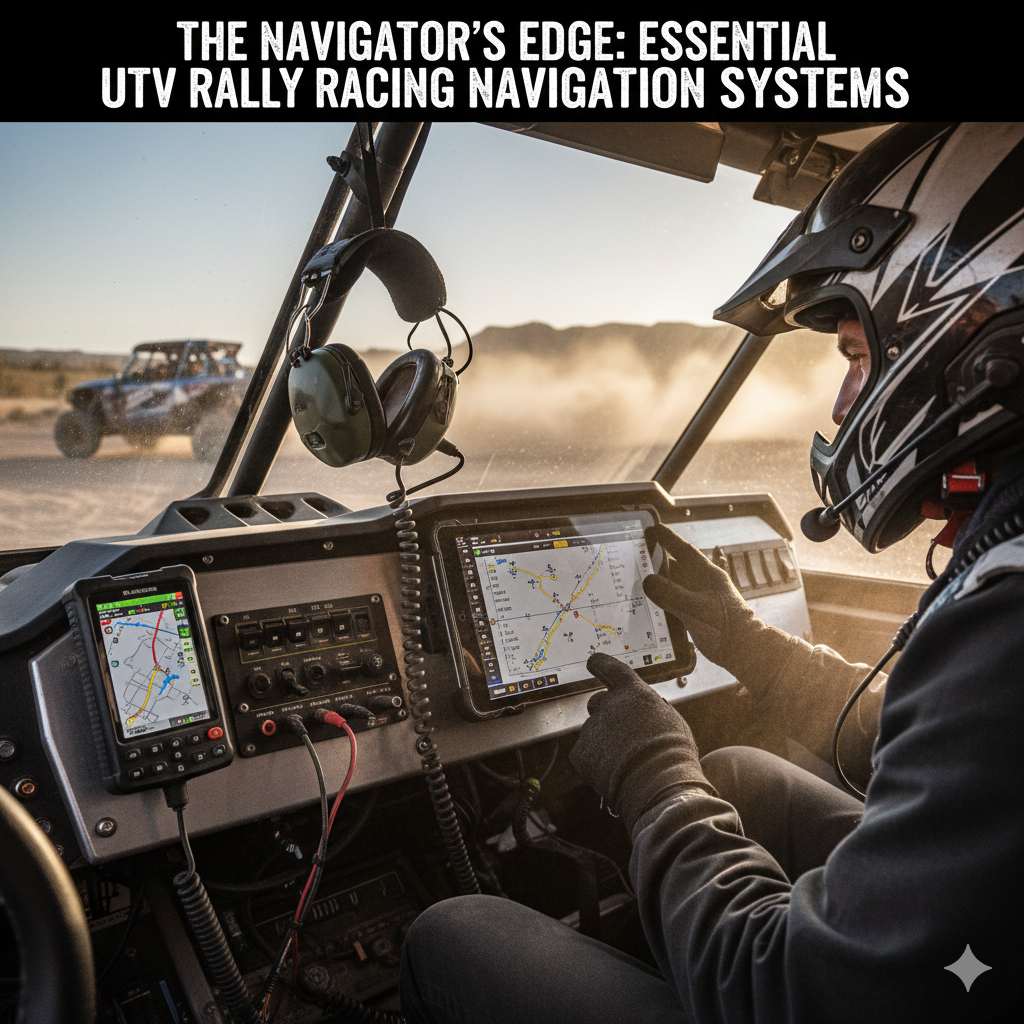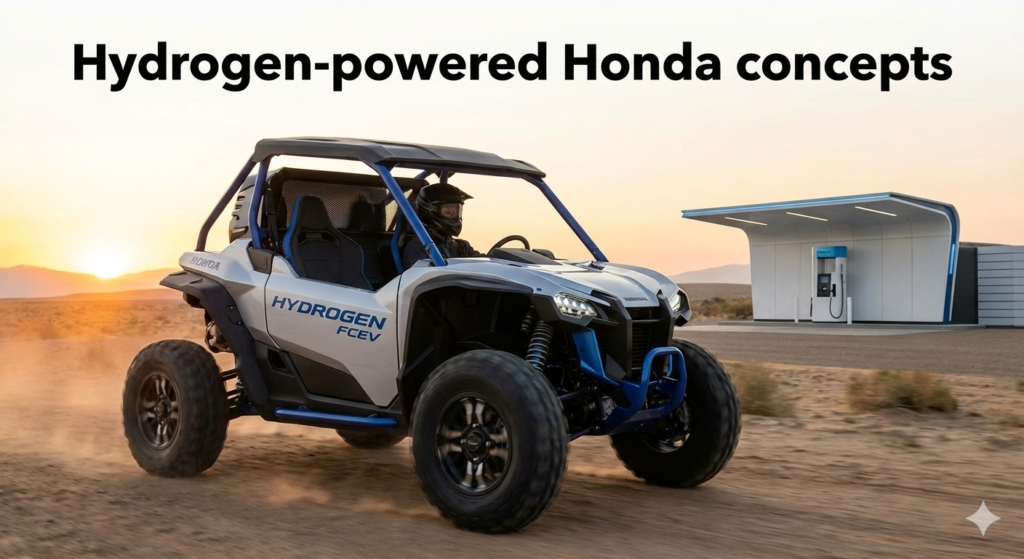There’s nothing quite like the thrill of driving through majestic mountain passes or exploring high-altitude trails.
The crisp air, the breathtaking views – it’s an experience many of us crave.
However, if you own a vehicle equipped with a Continuously Variable Transmission (CVT), you might have noticed a subtle, or not-so-subtle, dip in performance when you venture into thinner air.
This is a common challenge, but one that can be effectively addressed with the right knowledge and tuning.
As someone who loves pushing their machine to its limits,
I’ve spent countless hours understanding how altitude impacts vehicle dynamics, especially with CVTs.
The good news? You don’t have to settle for sluggish climbs or compromised power.
With strategic CVT tuning, you can reclaim that lost performance and ensure your ride is as exhilarating at 10,000 feet as it is at sea level.
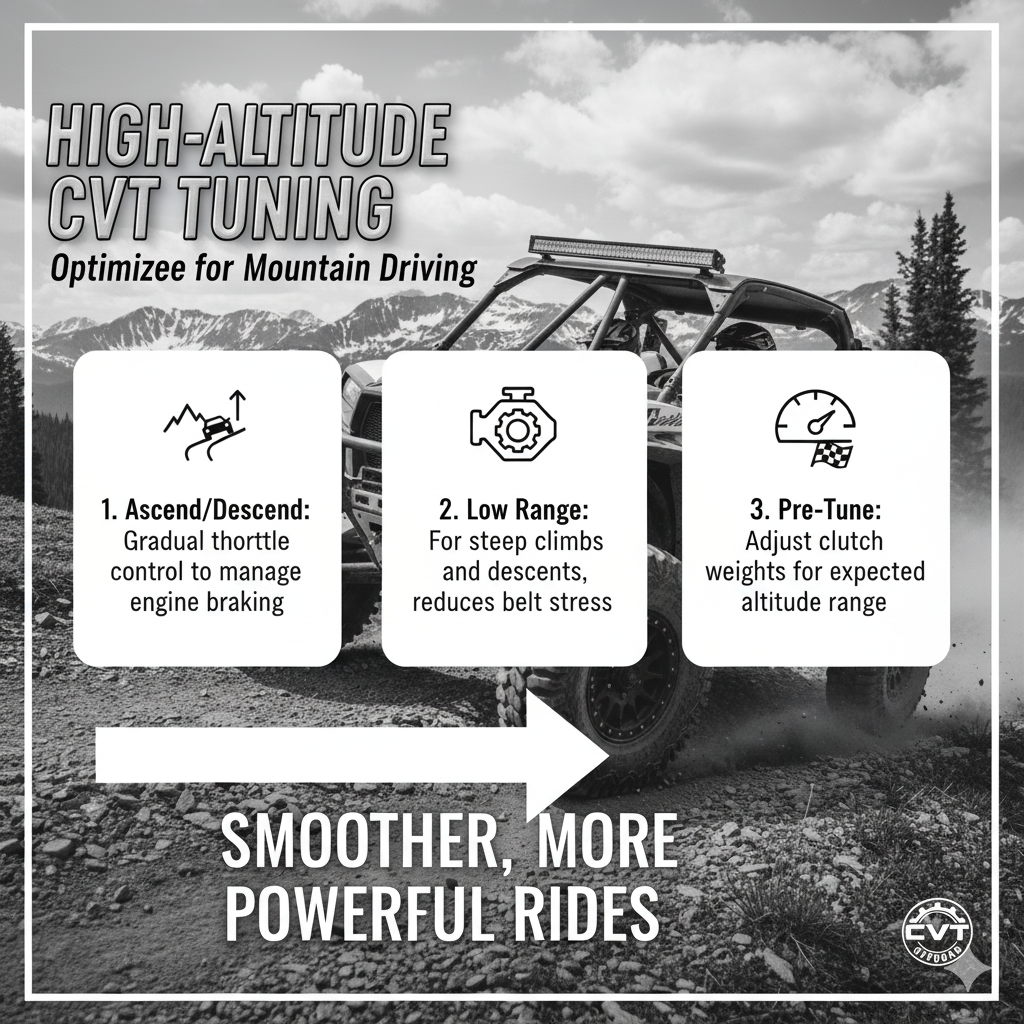
Understanding the Enemy: How Altitude Affects Your Engine and CVT
Before diving into solutions, let’s understand the problem.
The primary culprit behind high-altitude performance loss is reduced air density.
Simply put, there’s less oxygen in the air as you climb higher, directly impacting your engine’s ability to produce power.
For naturally aspirated engines, this means a noticeable drop in horsepower.
Even modern Electronic Fuel Injection (EFI) systems cannot magically create oxygen where there isn’t any.
Less oxygen means less fuel can be efficiently burned, leading to a decrease in overall power output [1].
For instance, a 750cc engine at 10,000 feet might only produce the horsepower equivalent of a 500cc engine at sea level [2].
This fundamentally alters how your engine performs and, consequently, how your CVT needs to respond.
Turbocharged engines fare better because the turbo forces air into the engine, compensating for the thinner atmosphere.
However, even they experience some degree of power loss, meaning even turbo vehicles can benefit from thoughtful CVT tuning at elevation [1].
The CVT’s Role in the Altitude Equation
How does this engine power loss translate to your CVT?
A CVT’s main job is to continuously adjust the gear ratio to keep your engine operating in its optimal RPM range, often called the “power band.”
This is the RPM window where your motor delivers the most horsepower, typically around 7700-8000 RPM for many UTVs [1].
The CVT achieves this by using a drive belt that moves between two conical pulleys – the primary (drive) clutch and the secondary (driven) clutch.
As engine RPM increases, the primary clutch closes, pushing the belt outwards, while the secondary clutch opens, allowing the belt to ride lower, effectively changing the gear ratio seamlessly.
When your engine loses horsepower due to altitude, the CVT struggles to maintain this optimal RPM.
If calibrated for sea-level performance, it might try to upshift too quickly into a higher gear ratio.
This happens because the clutch weights, designed for a certain engine power, are now too heavy for the reduced power output.
The engine simply doesn’t have enough power to push those weights out as effectively, causing it to bog down, operate below its peak power RPM, and ultimately, you feel a significant loss of acceleration and overall performance.
It’s like trying to climb a steep hill on a bicycle in too high a gear – you’ll struggle, and you might even stall [2].
This can lead to frustration, reduced control, and increased wear on your belt and clutch components due to excessive slippage.
The Art and Science of CVT Tuning for High Altitudes
CVT tuning, or clutch calibration, is the process of setting up your CVT clutch system to perfectly match your vehicle’s current power output, tire size, elevation, terrain, and riding style [1].
The goal is to ensure your engine stays in that sweet spot of its power band, maximizing horsepower delivery and preventing belt slippage or excessive heat.
It’s about optimizing the transfer of power from your engine to your wheels, ensuring every ounce of available horsepower is utilized efficiently.
For high-altitude driving, the core principle is to compensate for the reduced engine power.
This generally means adjusting your CVT to upshift slower, allowing the engine to rev higher and stay in its power band for longer, even with less available horsepower.
Think of it as giving your engine a mechanical advantage to overcome the thinner air, allowing it to generate and sustain the necessary torque to propel your vehicle forward.
This careful calibration is what separates a frustrating high-altitude experience from an exhilarating one.
1. Adjusting Clutch Weights: The Primary Key
Your primary clutch contains weights that are crucial for determining how quickly the clutch engages and the RPM it holds at full throttle.
These weights, often called flyweights, are flung outwards by centrifugal force as the engine RPM increases, causing the primary clutch sheaves to close and the belt to move outwards. The general rule of thumb is:
Add weight = lower RPM
Remove weight = raise RPM [1]
At high altitudes, with less horsepower, you typically need to remove weight from your primary clutch.
Lighter weights will require more RPM to be flung outwards with the same force, thus allowing the engine to rev higher before the clutch fully engages and shifts into higher ratios.
This helps the engine reach and maintain its optimal power band, compensating for the power loss and preventing it from bogging down [2].
It’s a delicate balance; too little weight can lead to over-revving and excessive engine wear, while too much weight results in sluggish performance.
However, it’s not just about the total weight; where that weight is distributed within the clutch weights also matters significantly. Most flyweights have adjustable heel, mid, and tip sections:
Tip weight primarily affects high-speed RPM and backshift.
If your RPMs spike too high and then quickly dip at higher speeds, your tips might be too heavy. Adjusting weight towards the heel can help smooth this out.
Heel weight influences low-to-mid acceleration.
If your vehicle feels slow off the line and RPMs climb gradually, your heels might be too heavy.
Moving weight forward, towards the tip, can improve initial responsiveness [1].
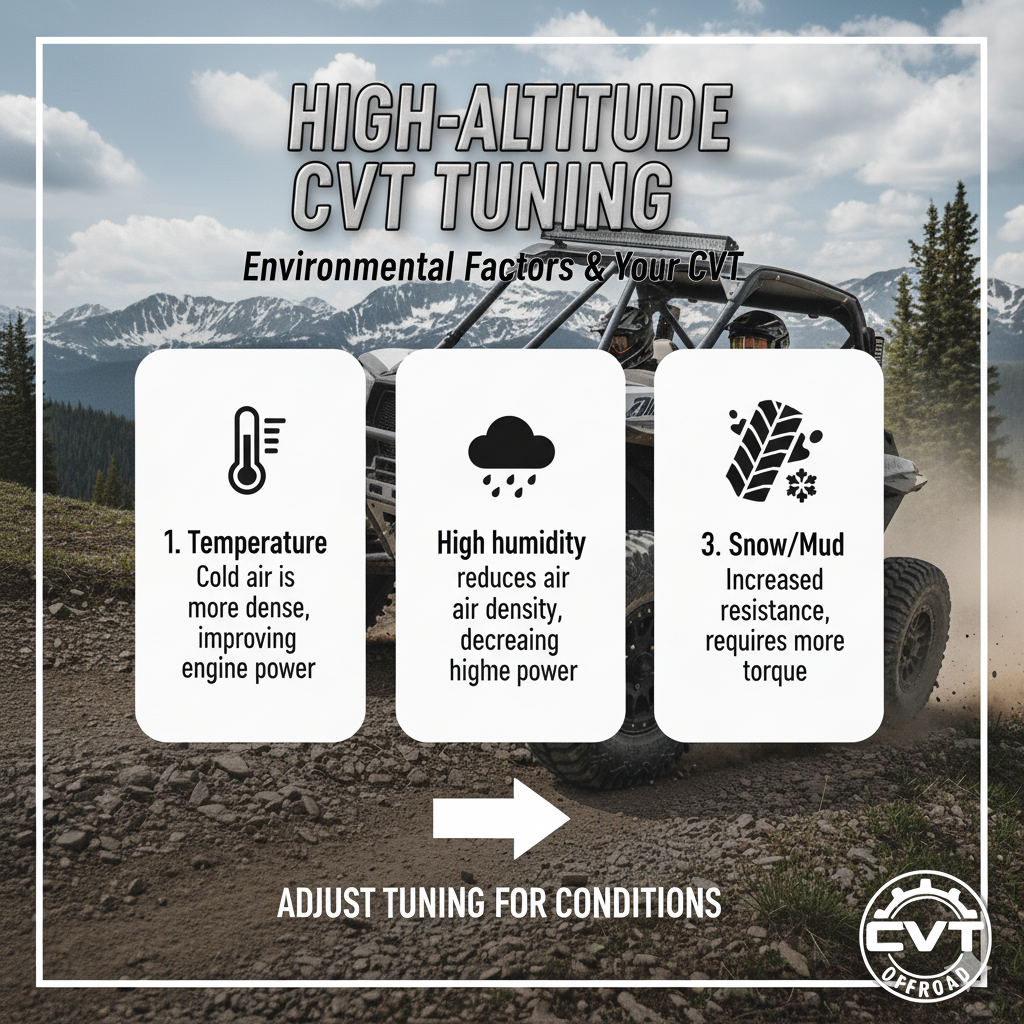
This intricate relationship means that a precise adjustment is often required.
For example, if you observe your RPMs spiking to 8400 and then dipping to 7600, it suggests your tips are too heavy, and some weight should be shifted back to the heel.
Conversely, if you start slowly at 7200 RPM and it gradually climbs to 8400, your heels are likely too heavy, and weight needs to be moved forward [1].
Some advanced clutch kits feature adjustable flyweights, which allow for on-the-fly adjustments without disassembling the clutch.
These are incredibly useful for riders who frequently change elevations or riding conditions, offering unparalleled flexibility and convenience.
These systems often use small set screws or magnetic weights that can be added or removed, making fine-tuning a much simpler process [2].
2. The Secondary Clutch: Fine-Tuning Your Performance
While the primary clutch handles the initial engagement and RPM, the secondary clutch plays a vital role in belt grip, maintaining consistent RPMs, and facilitating efficient backshifting.
The secondary clutch often uses a torsion spring, and the amount of twist in this spring can be adjusted to fine-tune your performance:
More twist = Higher RPM + faster backshift
Less twist = Lower RPM + slower backshift [1]
For high-altitude tuning, you might consider adding a bit more twist to the secondary spring.
This will help keep your RPMs up and improve backshifting, which is the CVT’s ability to quickly downshift when you let off the throttle and then get back on it.
A faster backshift is crucial for maintaining momentum on winding mountain roads or technical trails,
ensuring that when you re-engage the throttle, your engine is already in its power band and ready to deliver power.
This prevents the engine from bogging down and struggling to regain momentum, which can be particularly noticeable and frustrating on steep inclines.
3. Environmental Factors: A Holistic Approach
Altitude is a major factor, but it’s not the only one that influences your CVT’s optimal setup.
A truly optimized CVT setup takes into account all the forces working against your vehicle, ensuring that your tuning is comprehensive and effective across various conditions.
Here are some general guidelines from the experts at KWI Clutching, which serve as excellent baselines for understanding these complex interactions:
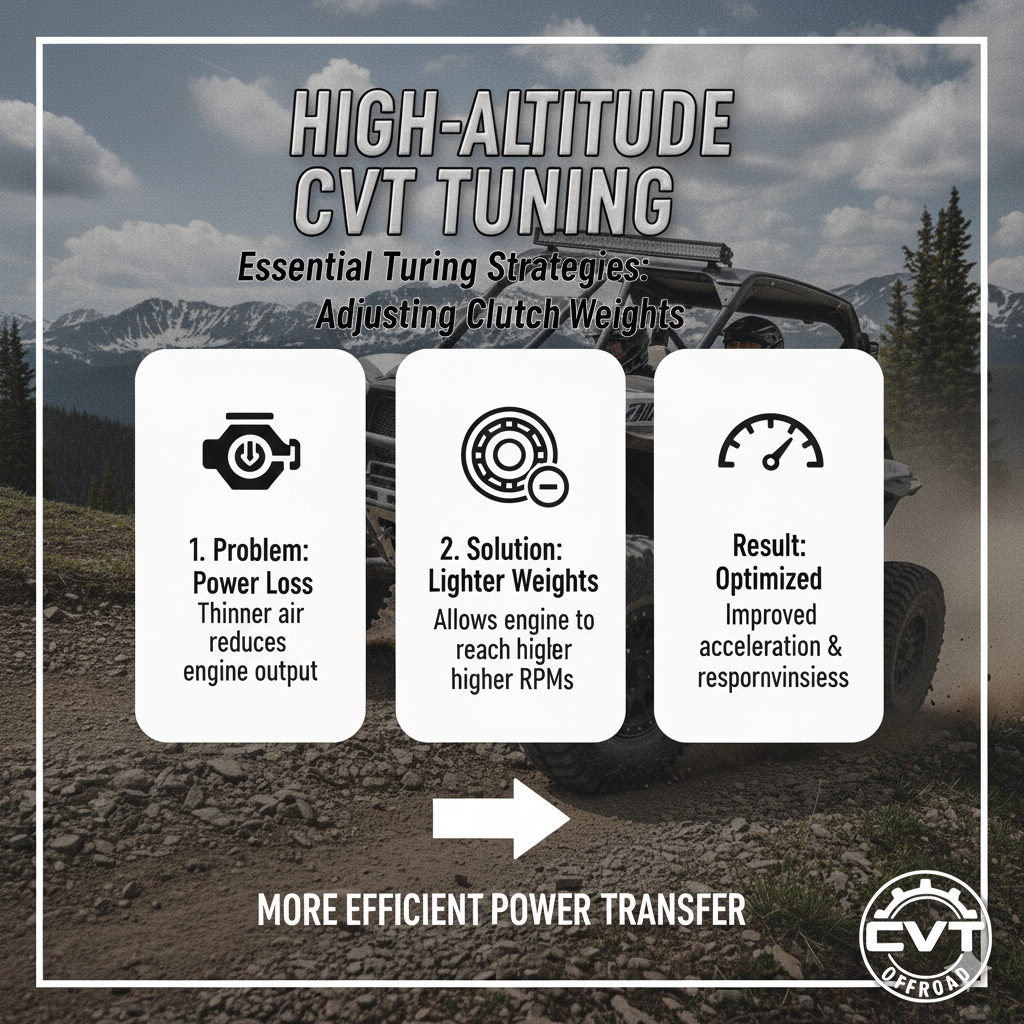
Altitude: As discussed, the thinner air at high elevations significantly reduces engine horsepower.
To compensate, generally subtract about 15% from your tuning target.
This helps recalibrate your CVT to operate efficiently with reduced power output, preventing bogging and ensuring your engine can still reach its optimal RPM range [1].
Sand Dunes: The unique challenge of sand riding comes from immense resistance.
Sand has much higher rolling resistance than hard-packed terrain, forcing your engine to work significantly harder.
To account for this extra load, it’s often recommended to subtract about 8% from your tuning target.
This helps your CVT maintain the engine’s RPM under increased strain, preventing overheating and belt slippage [1].
Oversized Tires: Larger, heavier tires increase rotating mass and rolling resistance, demanding more power.
Consequently, subtract about 8% from your tuning target to compensate for the increased load.
Proper tuning ensures your CVT can effectively transfer power to these larger tires without causing the engine to labor or the belt to slip [1].
Smaller Tires: Conversely, if you opt for smaller, lighter tires, you’re reducing overall weight and rolling resistance.
This means more engine power can be effectively transferred to the ground.
In such cases, consider adding about 8% to your tuning target, allowing your CVT to take advantage of the reduced load and potentially achieve higher performance or better fuel efficiency [1].
These percentages are a great starting point, but remember they are not absolute rules.
They serve as a guide to help you understand the direction of adjustment.
The ideal setup is a balance of all these factors, along with your personal riding style and the specific characteristics of your vehicle.
The key is to consider how each factor impacts the load on your engine and adjust your CVT accordingly to keep the engine in its power band.
Practical Tips for High-Altitude CVT Tuning
Now that we’ve covered the theory and the various factors at play, let’s get into some practical tips for tuning your CVT for high-altitude adventures.
These tips are born from experience and are designed to help you navigate the tuning process effectively and safely:
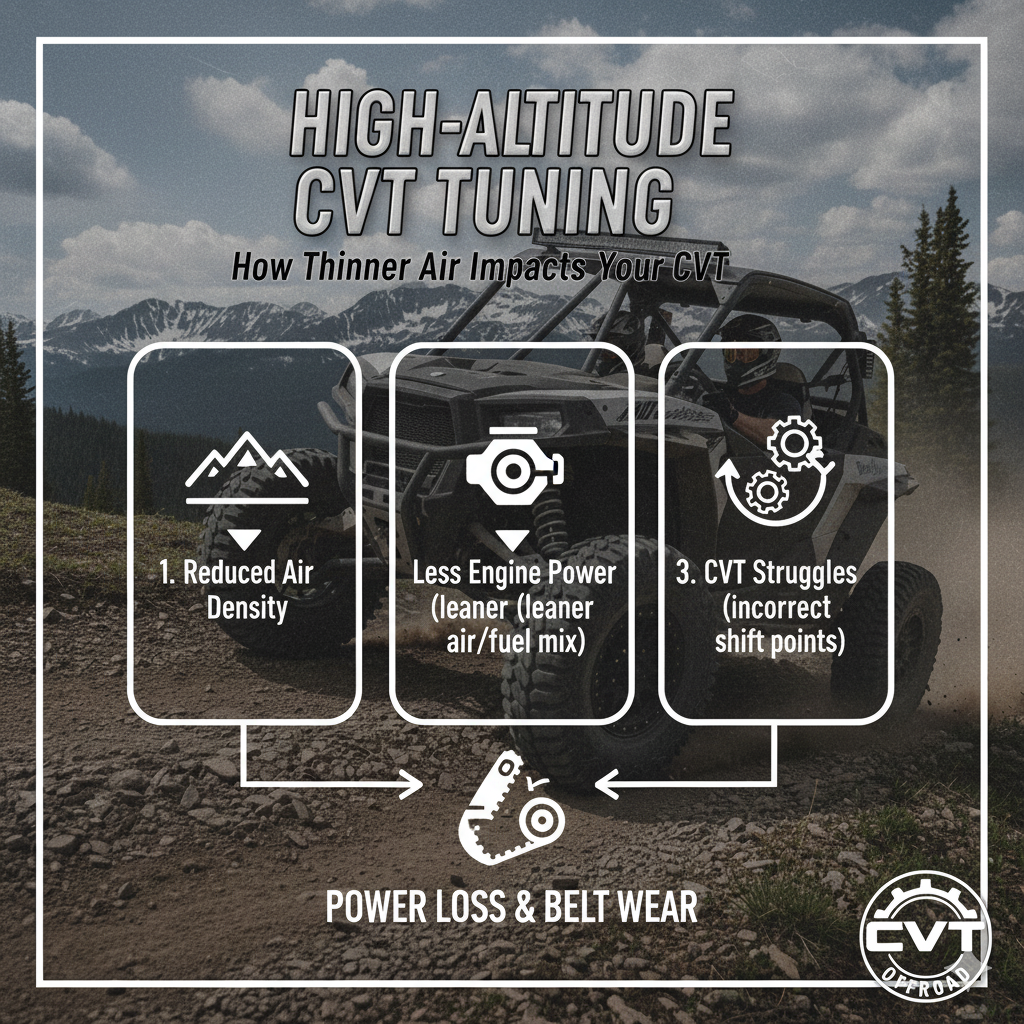
Invest in a good tachometer or data logger: This is arguably the most critical tool in your tuning arsenal. You can’t tune what you can’t measure.
A reliable tachometer is essential for monitoring your RPMs during wide-open throttle (WOT) pulls and making informed adjustments.
A data logger takes this a step further, allowing you to record and analyze RPMs, speed, and other parameters over time, providing invaluable insights into your CVT’s performance under various conditions.
Start with a baseline: If you’re new to CVT tuning, it’s a good idea to start with a clutch kit designed for your specific vehicle and intended use.
Many reputable manufacturers offer kits tailored for different altitudes, tire sizes, and riding styles.
These kits often come with detailed instructions and recommended settings, providing a solid foundation from which to fine-tune.
Avoid making drastic changes without understanding their potential impact.
Make small, incremental changes: This cannot be stressed enough. CVT tuning is a process of refinement, not revolution.
Don’t go from one extreme to the other.
Make small adjustments to your clutch weights or secondary spring, and then test your vehicle to see how it responds.
This iterative approach will help you dial in the perfect setup without overshooting the mark or introducing new problems. Patience is a virtue in tuning.
Keep a detailed log: Document every change you make and the resulting performance.
Note the specific weights used, spring settings, altitude, ambient temperature, and how the vehicle felt.
This will help you track your progress, understand cause-and-effect relationships, and easily revert to a previous setup if a change doesn’t yield the desired results.
A well-maintained log is your best friend in the tuning journey.
Don’t be afraid to experiment (responsibly): Every vehicle and every rider is different.
What works perfectly for one person might not be ideal for you.
Don’t be afraid to experiment with different setups to find what feels best for your riding style and the specific demands you place on your machine.
However, always do so responsibly, making small changes and testing thoroughly to avoid damage or unsafe conditions.
Consider professional help: If you’re feeling overwhelmed or simply want the best possible tune, don’t hesitate to consult with a professional CVT tuner.
They have specialized tools, experience, and knowledge that can quickly get your vehicle dialed in for high-altitude performance.
The Benefits of Proper High-Altitude CVT Tuning
Beyond simply regaining lost power, proper CVT tuning for high altitudes offers a multitude of benefits that enhance your overall riding experience and prolong the life of your components:
Boosted Acceleration and Responsiveness: By keeping your engine in its optimal power band, you’ll experience quicker acceleration and a more immediate response to throttle input, making climbs feel effortless and dynamic.
Improved Belt Life: When your CVT is properly tuned, the belt operates with less slippage and at more consistent temperatures.
This significantly extends the life of your drive belt, saving you money and preventing inconvenient breakdowns on the trail.
Optimized Fuel Efficiency: An engine that operates efficiently in its power band uses fuel more effectively.
While high-altitude driving inherently reduces fuel economy due to increased throttle input, a well-tuned CVT can mitigate some of this loss.
Increased Control and Predictability: A vehicle that responds predictably and powerfully instills confidence.
Proper tuning means your machine will behave as expected, allowing you to focus on the terrain and enjoy the ride.
Reduced Strain on Components: By preventing the engine from bogging down or over-revving, you reduce undue stress on your engine, clutches, and transmission components, leading to greater durability and fewer costly repairs.
Conclusion: Embrace the Climb
Driving at high altitudes presents a unique set of challenges, but with a well-tuned CVT, you can conquer the peaks with confidence.
By understanding how altitude affects your engine and CVT, and by making strategic adjustments to your clutch setup, you can reclaim that lost performance and enjoy a smoother, more powerful ride.
Remember, CVT tuning is both an art and a science.
It requires patience, attention to detail, and a willingness to experiment.
But the reward – a vehicle that performs flawlessly at any elevation – is well worth the effort.
So, the next time you’re planning a trip to the mountains, don’t let the thin air hold you back.
With a little bit of CVT tuning, you can ensure your machine is ready to take on any challenge you throw at it.
References
[1] KWI Clutching. (2025, July 9). *CVT Tuning: The Ultimate Guide to Tuning Your UTV for Peak Off-Road Performance*. [
[2] RZRForums.net. (2009, September 29). *Clutch weights for elevation change?*. [)


